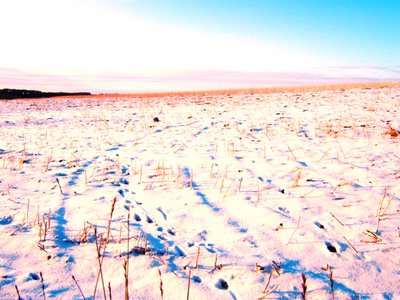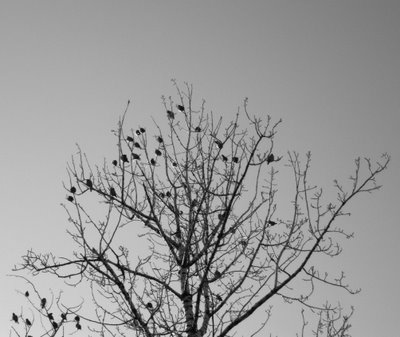After I get used to the dim light & extraordinarily loud, obnoxious music (& finish searching the menu for something meatless yet still containing some amount of protein) I am continually confronted by the fact that most popular chain restaurants are replicating & perpetuating binary gender roles overtly & unapologetically. This is not necessarily a trait of all restaurants in this culture. I can name many, many restaurants that do not create this type of space; however, on multiple visits I’ve noticed that Earls is a perfect example of a rigidly gendered environment. Not only is the space gendered, it also replicates the conventionalized gender roles of a capitalist patriarchy.
I suppose it’s no worse than any bar, but I never go to bars or nightclubs so I don’t have as much experience with analysing those spaces. It’s horrible to be in there because it seems every time I’m there I have to bite my tongue and never reveal my observations. I’m always there with very conventional people who just don’t understand & anything I say is lost on them, or I’m there with my dad, who finally has regenerated his taste buds after chemo obliterated them, & wants to enjoy his favourite caesar salad in silence. But I am digressing. I will now describe this little microcosm of patriarchal hegemony.
The first thing I always notice is that the interior decorating generally has a theme that we might categorise as being ‘masculine’ (in this culture) – dark mahogany wood, rough-hewn stone fireplaces, everything big & angular. With enormous squishy dark brocade chairs pulled up to the tables, it makes me think of a Victorian patriarch’s library. (belonging to Earl, yes?) There is usually a large bar area in most Earls restaurants, complete with large screens endlessly showing sports games with only males playing, of course – because, you know, serious sports fan don’t watch women play, even if they’re really ‘hot’ tennis players or wearing beach-volleyball bikinis! Men are behind the bar, concocting alcoholic potions, and in the kitchen, preparing all the food. They do this all fully clothed, whilst the far-less-clothed women are flocking together by the door, waiting.
Women are the waiters here. According to my informal counts at 3 different Earls restaurants, women outnumber male waiters 5 to 1, and any males in that position tend to be responsible for cleaning off the tables, instead of bringing out the food & drink. Regardless of exact numbers, I have noticed a pervasive phenomenon. Our ‘Earl’ plays the Pygmalion-patriarch in ensuring these women are dressed identically, in little black skirts and high heels – terribly impractical for being on one’s feet all day, but essential, of course, for accentuating the curves of the buttocks and the breasts, which are barely encased in tight lululemon pseudo-‘yoga’ shirts that tend to have necklines plunging to just above the solar plexus. Thoroughly hairless skin, tanned & layered with make-up, hair on the head artificially coloured to either unrealistic blonde or improbable black. Individual identity becomes negligible. They are sculpted into the ideal ‘attractive’ female in the culture; there is no variation, nor is there anything androgynous, or, rather, sexually-neutral about their look.
In this way, I see them as being essentially made into another product at Earls, commercialized into a sexualized serving object – these ‘Earls-girls’ have had their individualities blurred in this adherence to a hyperfeminine stereotype. They may cater food to all members of the public, but they cater aesthetically to the ‘male gaze, here where (to paraphrase John Berger) men look and act, and women appear (and serve). Women are evaluated and valued on the basis of what Laura Mulvey calls, ‘to-be-looked-at-ed-ness’.
Some people get quite indignant when I bring this up, telling me I’m prudish, or try to tell me that it’s the women’s choice to look this way, and perhaps they like it. Firstly, it’s not a question of prudishness – breasts are not offensive to me at all. After all, I do possess them myself (though quite subtly). And secondly, I don’t doubt that some women don’t mind the extra money they supposedly get for being the ‘pretty piece of flesh’ serving up, well, pieces of flesh. I don’t doubt that some need no coercion to dress this way, and they have no qualms about being hired based on their appearance (and, it seems, bra-cup size). But even if they feel they are being empowered, does it really changed the fact that people are still exploiting them, that their sexuality and appearance is being exploited? I’m not sure it does.
I guess it’s like in pornography. I really don’t accept the whole argument of the potential for it being a source of empowerment for women. (or anyone, really.) You can create something with the best, most empowering intentions, but what happens to it when it’s devoured and re-interpreted, mis-interpreted by the masses – is it still truly empowering? Can something empower someone truly even as it continues to contribute to their exploitation? The post-modern thing to say might be that if one believes they are empowered, that’s all that matters. But I don’t know. I think that’s just more than a little sketchy & naïve to see that as empowerment. Even if they are willing to be subjected to the ‘male gaze’ (among other things), I really do believe that they are simply conforming to the hegemonic norms of ‘beauty’ and ‘femininity’ in this culture that are constructed and enforced for male benefits, which highlights male power. So neither pornography based on women’s desires nor women dressing up to serve the male gaze is going to overthrow any patriarchy, or convince anyone otherwise about their beliefs about women’s rights and status, which, contrary to the beliefs of many, are still an issue! As Audre Lorde would say, these sorts of tools will never dismantle the master’s house.
The Earl’s-girls are so ingrained into the Earls restaurant environment that it seems quite difficult to dismantle Earl’s cushy little house, & they don’t seem to mind. What irks me most of as is the lack of people questioning this – do they really care that many of these girls aren’t even terribly good at their job, because their ‘hotness’ makes up for it? Is it that even if the men in the kitchen aren’t having a good day, and the meal is less than stellar, they can say, ‘well, at least the waitresses are hot!’ Do they even recognize that they’re drinking their man-beer (never a fluorescent green martini – those are ‘girly drinks’!) in the ‘Red Lite Lounge’? (How much more obvious can you be in evoking a brothel?) What is really so different in theory between Earl’s-girls and Playboy-bunnies?
I’m really not so sure there is a difference. Playboy*, of course, is clearly about overt sexuality, phallocentric male sexuality in particular, via the ‘consumption’ of images of ‘attractive’ women. But how different are food and sex, when compared for the possibilities for pleasure? At Earls, as in many restaurants here, it’s very easy to see how women are clearly transformed into products for consumption via the male gaze, along with the food they serve. Women may eat food at the restaurant alongside the men, but it is clear that Earl sees them little more as either further decoration (or detraction) from his uniform little harem of servers, there for the male’s viewing, and serving, pleasure.
Give me Cafe Mosaics with their subdued service! The skinny boys & tattooed girls wearing whatever they like! Serving food, & showing local art on the walls!
Or the King & I. Pleasant, fully clothed boys and a few girls in bow ties. That’s much better. Or Roots, where they all wear chef-outfits with personal embellishments, and you serve yourself, mostly. Gender-neutral and focused on nourishing food, 'tis what a restaurant should be.
*I don’t even want to start talking about Playboy here. I recommend Ariel Levy’s book "Female Chauvinist Pigs" as an thorough, well-written, & unapologetic look into that scene, as well as the miasma of bars/nightclubs/‘reality’ tv, etc, etc. It really highlights the pervasive extent of ‘Playboy’ culture and the continued exploitation of female sexuality, which is not only restricted to men – the reinforcement comes from females themselves, females of all sexual orientations.





